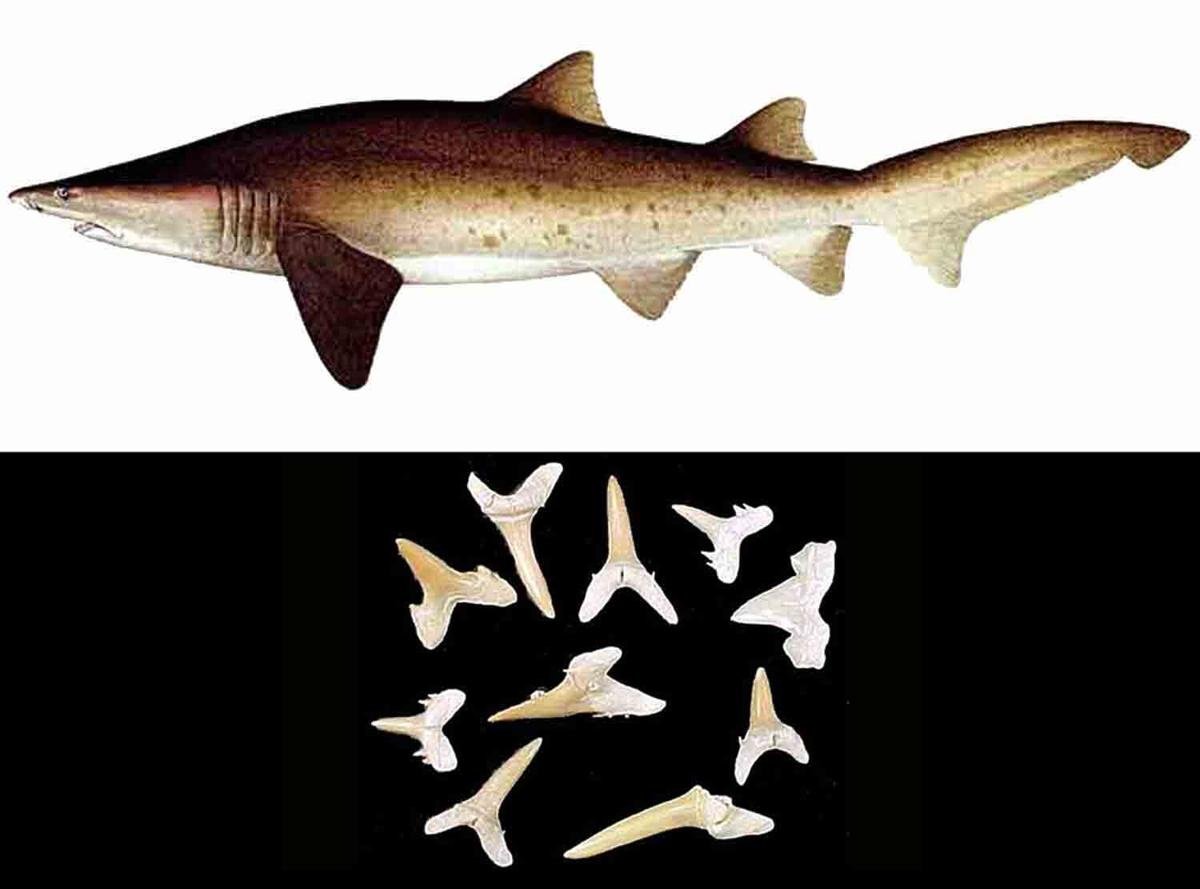A new study on the teeth of extinct sand tiger sharks Striatolamia macrota and Carcharias spp. has provided the first estimate of Eocene (50 million years ago) salinity for the western Arctic Ocean.

This image shows the extant sand tiger shark Carcharias taurus. Image credit: Richard Ling / CC BY-SA 2.0.
The study, published in the journal Geology, indicates that these Eocene sharks were thriving in the brackish water of the western Arctic Ocean.
In contrast, modern sand tiger sharks living today in the Atlantic Ocean are very intolerant of low salinity, requiring three times the saltiness of the Eocene sharks in order to survive.
“This study shows the Arctic Ocean was very brackish and had reduced salinity back then. The ancient sand tiger sharks that lived in the Arctic during the Eocene were very different than sand tiger sharks living in the Atlantic Ocean today,” said lead author Dr Sora Kim of the University of Chicago.

The new findings on Arctic Ocean salinity conditions in the Eocene were calculated in part by comparing ratios of oxygen isotopes locked in ancient shark teeth found in sediments on Banks Island in the Arctic Circle and incorporating the data into a salinity model.
Dr Kim’s team also compared its information to prior studies of sediment cores extracted from an oceanic region in the central Arctic Ocean called the Lomonosov Ridge – a steep hump of continental crust that rises more than 300 meters from the ocean floor – to estimate past environmental conditions in the Arctic Ocean.

“Oxygen isotopes in ancient bones and teeth reflect the water animals are living in or drinking. Because sharks are aquatic, the oxygen from the ocean is constantly being exchanged with oxygen in their body water, and that’s what is incorporated into their teeth. When I analyzed their isotopic composition, the numbers seemed weird at first because they indicated an essentially freshwater environment,” Dr Kim said.
The scientists analyzed 30 fossil sand tiger shark teeth collected from Banks Island and 19 modern sand tiger shark teeth from specimens caught in Delaware Bay bordered by Delaware and New Jersey.

The paleo-salinity estimate for the modern sand tiger sharks is consistent with the continental shelf salinity present from Delaware south to Florida and from the coastline to roughly 10 km offshore, known hunting grounds for modern sand tiger sharks, which have formidable teeth and can reach a length of nearly 3 meters.
“We now know a fair amount about the terrestrial animals and plants that were living in the Eocene Arctic greenhouse period. To finally get some data on the Eocene marine environment using these shark teeth will help us to begin filling in the gaps,” concluded study co-author Dr Jaelyn Eberle of the University of Colorado.
Source: sci.news








